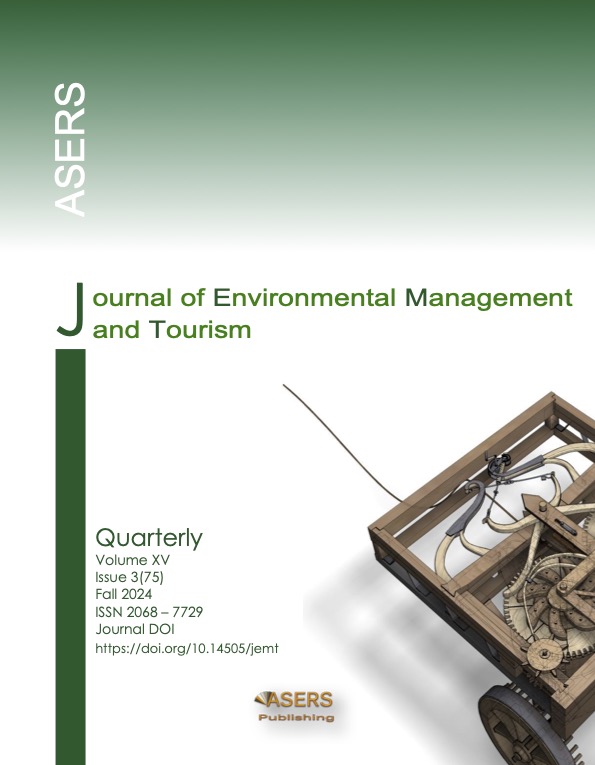Integration of the Pro-Environmental Concepts in Various Management Accounting Tools
Abstract
Integrating pro-environmental concepts into management accounting tools is essential for organizations aiming to enhance their sustainability performance. Measures to support a pro-environmental attitude in each enterprise can be implemented differently. This diversity should result from the specifics of its activities.
The case study was conducted during an audit of management accounting tools in the company in Poland. The main goal was to evaluate the accuracy of the management accounting tools and identify areas for improvement. This was an audit of the management accounting. During the audit, it was observed that many of the examined management accounting tools meet the pro-environmental requirements and are integrated. This means that information from one tool is utilized by others, creating a multidirectional relationship. During the audit, the adaptation of management accounting tools to pro-environmental requirements was observed but not interfered with, allowing the use of ethnographic research methods. Integrating these pro-environmental concepts into management accounting tools helps organizations achieve better resource efficiency, reduce environmental impact, and enhance long-term sustainability.
In the paper there were also described various management accounting tools such as for example: Balanced Scorecard (BSC), Life Cycle Costing (LCC), Target Costing or Budgeting. The aim was to examine how to incorporate these concepts to reach pro-environmental aims to support sustainable development.
Structured abstract: This study aims to integrate pro-environmental concepts into management accounting tools to enhance sustainability performance within organizations. The research explores various methods of incorporating these concepts and assesses their effectiveness through a case study conducted during an audit of management accounting tools in a Polish company. The study employed ethnographic research methods during an audit of management accounting tools, observing the adaptation of these tools to pro-environmental requirements without interference. The audit evaluated the accuracy of the management accounting tools and identified areas for improvement. Various tools such as Balanced Scorecard (BSC), Life Cycle Costing (LCC), Target Costing, and Budgeting were examined for their integration of pro-environmental concepts. The audit revealed that many of the management accounting tools in the examined company already meet pro-environmental requirements and are well-integrated, facilitating multidirectional relationships where information from one tool informs others. This integration helps organizations achieve better resource efficiency, reduce environmental impact, and enhance long-term sustainability. The findings suggest that management accounting tools can be adapted to support pro-environmental objectives, leading to improved sustainability performance. Organizations can benefit from a tailored approach to implementing these tools based on their specific activities and requirements, enhancing their overall environmental and resource efficiency. This study provides practical insights into how pro-environmental concepts can be seamlessly integrated into management accounting tools. It highlights the importance of a customized approach based on organizational specifics and demonstrates the benefits of such integration for sustainability performance.
References
[2] Adams, C. A., and McNicholas, P. 2007. Making a difference: Sustainability reporting, accountability and organizational change. Accounting, Auditing and Accountability Journal, 20(3): 382-402.
[3] Ansari, S. L., Bell, J. E., and Swenson, D. W. 2007. Target costing: Uncharted research territory. Cost Management, 21(1): 14-21.
[4] Arvidsson S., and Dumay J. 2022. Corporate ESG reporting quantity, quality and performance: Where to know for environmental policy and practice? Business Strategy and the Environment, 31(3): 685-1247.
[5] Berrone, P., and Gomez-Mejia, L. R. 2009. Environmental performance and executive compensation: An integrated agency-institutional perspective. Academy of Management Journal, 52(1): 103-126.
[6] Burns, J., and Scapens, R. W. 2000. Conceptualizing management accounting change: An institutional framework. Management Accounting Research, 11(1): 3-25.
[7] Chalastra M. 2021. Tasks of Modern Budgeting, Digitalization in Finance and Accounting, Springer Proceedings in Business and Economics. DOI: https://doi.org/10.1007/978-3-030-55277-0, 278-287
[8] Cooper, R., and Slagmulder, R. 1997. Target costing and value engineering. Productivity Press.
[9] Epstein, M. J. 2008. Making sustainability work: Best practices in managing and measuring corporate social, environmental, and economic impacts. Greenleaf Publishing.
[10] Epstein, M. J., and Roy, M. J. 2001. Sustainability in action: Identifying and measuring the key performance drivers. Long Range Planning, 34(5): 585-604.
[11] Figge, F., Hahn, T., Schaltegger, S., and Wagner, M. 2002. The sustainability balanced scorecard – Linking sustainability management to business strategy. Business Strategy and the Environment, 11(5): 269-284.
[12] Friede, G., Busch, T., and Bassen, A. 2015. ESG and financial performance: Aggregated evidence from more than 2000 empirical studies. Journal of Sustainable Finance and Investment, 5(4): 210-233.
[13] Gale, R. 2006. Environmental management accounting as a reflexive modernization strategy in cleaner production. Journal of Cleaner Production, 14(14): 1228-1236.
[14] Gray, R., Owen, D., and Adams, C. 1996. Accounting and accountability: Changes and challenges in corporate social and environmental reporting. Prentice Hall.
[15] Hansen, D. R., and Mowen, M. M. 2006. Cost management: Accounting and control. Thomson South-Western.
[16] Kaplan, R. S. 2010. Conceptual foundations of the balanced scorecard. Harvard Business School.
[17] Kaplan, R. S., and Norton, D. P. 1996. The balanced scorecard: Translating strategy into action. Harvard Business Review Press.
[18] Kezenbayeva, Gulmira B. 2019. Development of Methods for Calculating the Environmental and Economic Efficiency of Waste Treatment Technologies. Journal of Environmental Management and Tourism, 7(31): 1624-1630. DOI: https://doi.org/10.14505//jemt.v9.7(31).25
[19] Kotapski R., Chalastra M. 2021. Audit of Controlling in Hospitals: What Is the Scope of an Audit?, Digitalization in Finance and Accounting, Springer Proceedings in Business and Economics. DOI:https://doi.org/10.1007/978-3-030-55277-0
[20] Moller Klaus 2018. Controller Process Model 2.0. Haufe-Lexware GmbH and Co. KG
[21] Morgan Stanley Institute for Sustainable Investing. (2019). Sustainable Signals: Individual Investor Interest Driven by Impact, Conviction and Choice.
[22] Schaltegger, S., and Burritt, R. L. 2000. Contemporary environmental accounting: Issues, concepts and practice. Greenleaf Publishing.
[23] Siemionek-Ruskań, M., Siemionek-Lepczyńska, A. 2018. Development of Balanced Scorecard Perspectives for the Polish City of Olsztyn, Proceedings of the 32nd International Business Information Management Association Conference (IBIMA) - Vision 2020, s. 4207 - 4215.
Copyright© 2025 The Author(s). Published by ASERS Publishing 2025. This is an open access article distributed under the terms of CC-BY 4.0 license.
